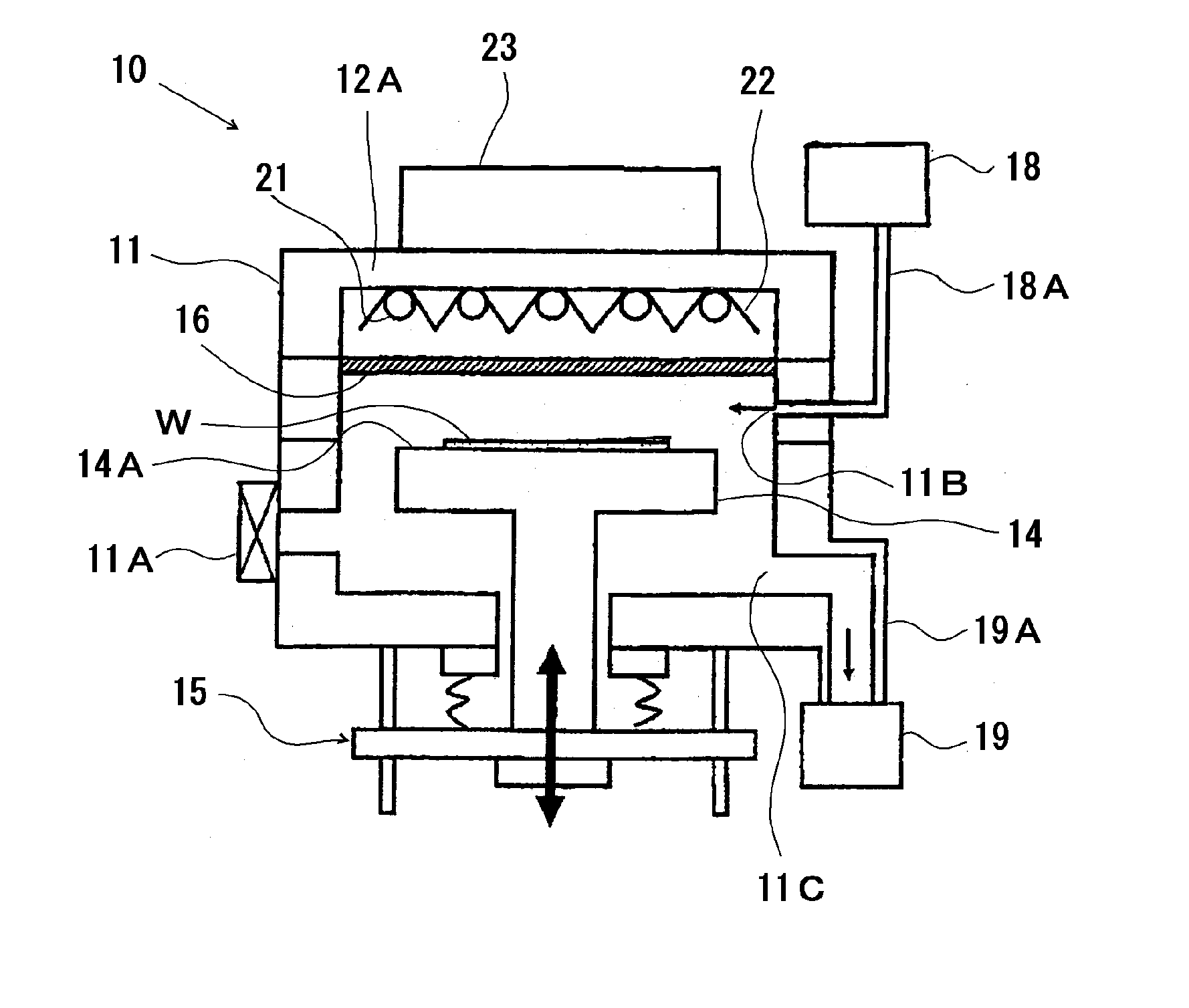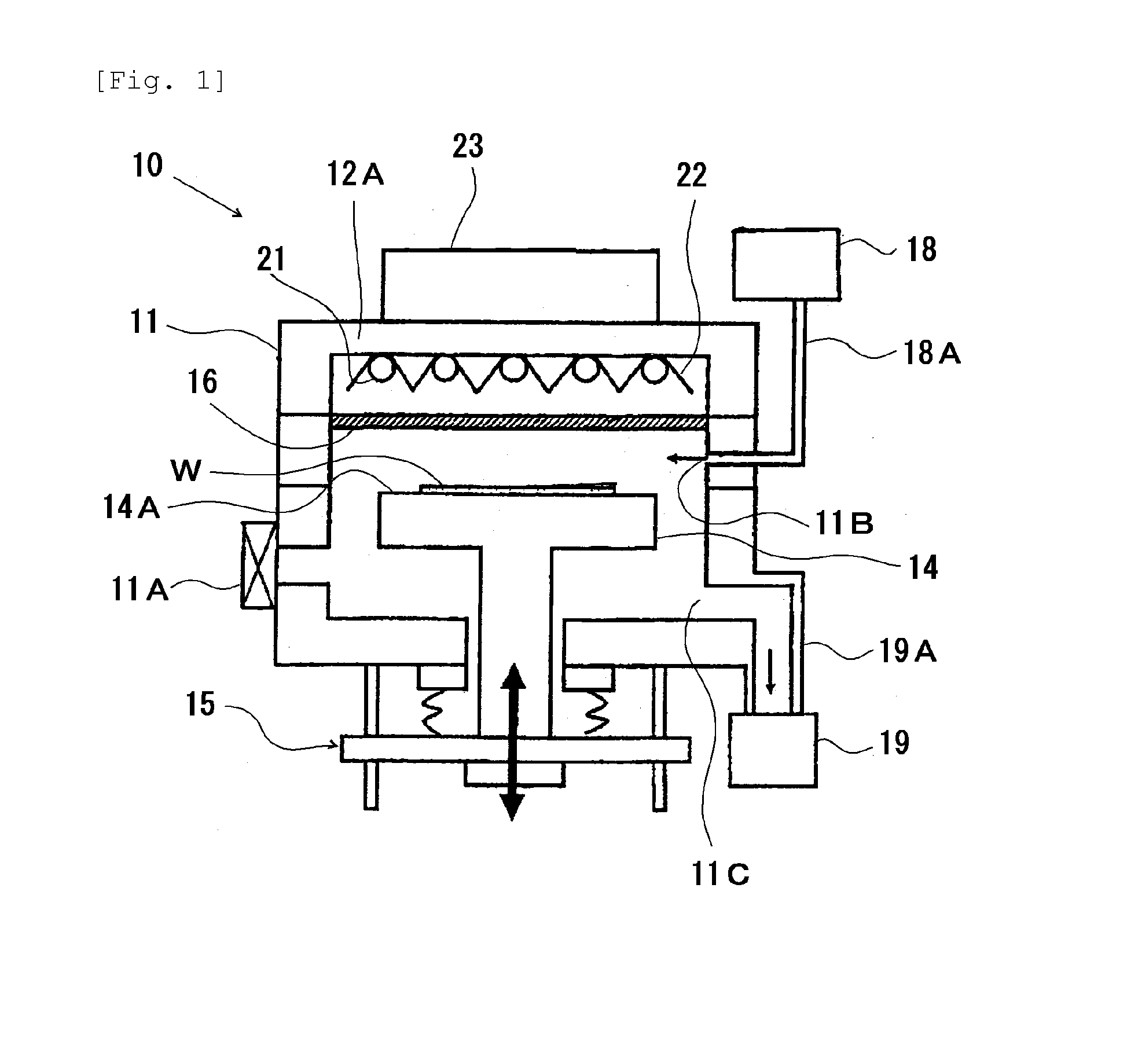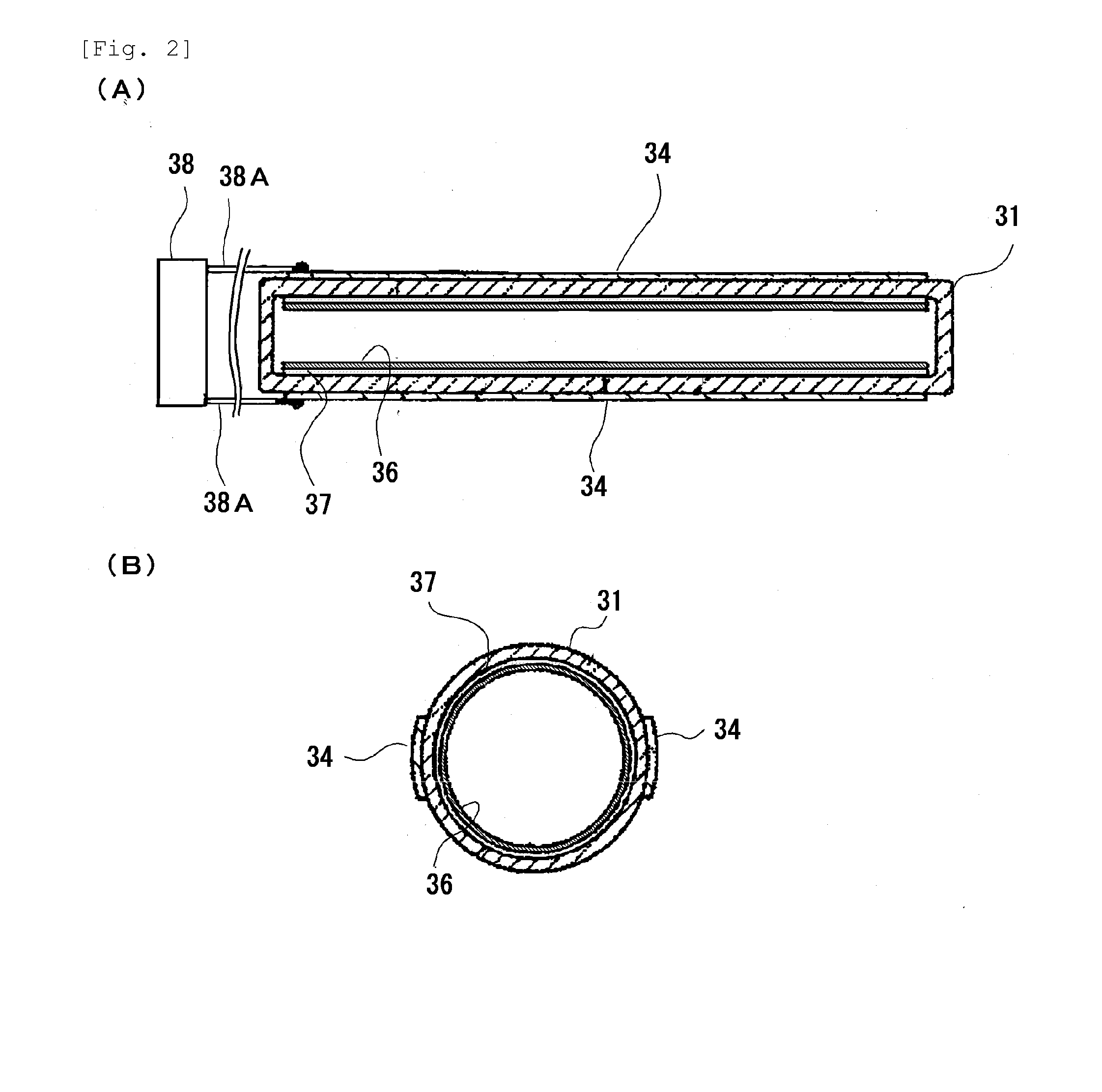Process for curing low-dielectric constant material
a technology curing process, which is applied in the direction of furnaces, furnace types, hearth type furnaces, etc., can solve the problems of low-dielectric constant performance relative dielectric constant, and deterioration of semiconductor substrates, so as to suppress the influence of heat from lamps and increase the mechanical strength of low-dielectric constant material. , the effect of increasing the mechanical strength of low-dielectric constan
- Summary
- Abstract
- Description
- Claims
- Application Information
AI Technical Summary
Benefits of technology
Problems solved by technology
Method used
Image
Examples
experimental example 1
Curing Processing (1)
[0043]A curing apparatus having the configuration shown in FIG. 1 (the curing apparatus may be referred to as a “curing apparatus (1)”) was produced. In the curing apparatus (1), fluorescent lamps having the configuration shown in FIGS. 2A and 2B and each including a phosphor layer containing a phosphor composed of neodymium-activated yttrium phosphate (these fluorescent lamps may be referred to as “fluorescent lamps (1)”) were used as the ultraviolet light source. In each fluorescent lamp (1), xenon gas was used as the discharge gas, and the light-emitting tube (31) was made of quartz glass and had an outer diameter of 10 mm and an inner diameter of 9 mm. The fluorescent lamps (1) had an emission length of 400 mm, were turned on at an emission intensity of 7.2 mW / cm2, and emitted light with a spectral distribution shown in FIG. 5. The casing (11) used was made of anodized aluminum, and quartz glass was used for the irradiation window (16).
[0044]In the produced ...
experimental example 2
[0060]For each of the curing apparatus (1) to curing apparatus (4) and curing apparatus (7) produced in Experimental Example 1, the effective irradiation distance of the ultraviolet light source was measured. The results are shown in TABLE 2. One of the curing apparatus (1) to curing apparatus (4) and curing apparatus (7) was used, and then the position of the mounting table (14) having a processing target (W) mounted thereon was adjusted by the driving mechanism (15) such that the separation distance between the processing target (W) and the ultraviolet light source became the effective irradiation distance of the ultraviolet light source. Then the casing (11) was reduced in internal pressure such that the degree of vacuum was 5 Torr. Then the plurality of lamps in the ultraviolet irradiation unit were turned on simultaneously under the input power condition shown in TABLE 2 to irradiate the low-dielectric constant material film in the processing target (W) with ultraviolet rays fo...
PUM
| Property | Measurement | Unit |
|---|---|---|
| wavelength | aaaaa | aaaaa |
| wavelengths | aaaaa | aaaaa |
| peak wavelength | aaaaa | aaaaa |
Abstract
Description
Claims
Application Information
 Login to View More
Login to View More - R&D
- Intellectual Property
- Life Sciences
- Materials
- Tech Scout
- Unparalleled Data Quality
- Higher Quality Content
- 60% Fewer Hallucinations
Browse by: Latest US Patents, China's latest patents, Technical Efficacy Thesaurus, Application Domain, Technology Topic, Popular Technical Reports.
© 2025 PatSnap. All rights reserved.Legal|Privacy policy|Modern Slavery Act Transparency Statement|Sitemap|About US| Contact US: help@patsnap.com



